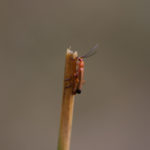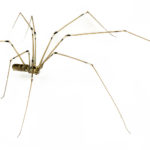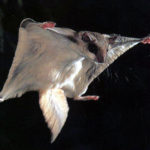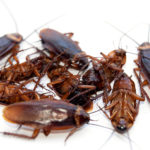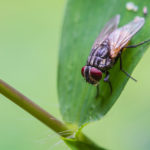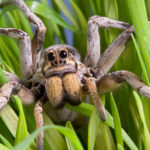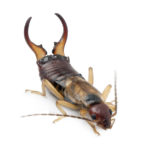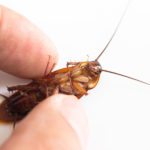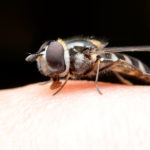The common name comes from the fact that the larvae bore into wharf pilings, both in sea water and fresh water. Adults are nuisance pests, especially when they suddenly appear in large numbers. This species is distributed worldwide. Adults are about about 1/4-9/16″ (7-14 mm) long; body elongate, slender, and soft. Color of dorsum pale […]
Daddy Long Legs
The common name of daddy-long-legs probably comes from their small body and very long, slender legs, and that of harvest-men because they are most often seen at harvest time. These are nuisance pests in and around structures. Adults have a a body about 1/16th to 1/2 inch long and males are usually smaller than females, […]
Flying Squirrels
These small tree squirrels actually glide instead fly, but can glide over 80 yards/240 ft (73.2 m). They become pests only when they take up residence in an attic where they can cause odor and damage with their urine and keep people awake with their nocturnal activity; they are of very minor medical concern. They […]
German Cockroach
The German cockroach is by far the most important and usually the most common of the cockroaches. In addition to being a nuisance, it has been implicated in outbreaks of illness, the transmission of a variety of pathogenic organisms including at least one parasitic protozoan, and allergic reactions in many people. This species has worldwide […]
Ladybug
Since lady is defined as “a woman of good family, social position, breeding, etc.,” this may refer to the fact that most species of this beetle family are highly beneficial insects; only 3 of 475 United States species are not beneficial. Some species have a habit of overwintering in structures and are therefore nuisance pests. […]
Cluster Flies
The common name reflects this species’ habit of forming compact clusters of hibernating individuals, typically in wall voids or attics. It is widely distributed in Europe, Canada, and throughout the United States except for those states bordering the Gulf of Mexico. Specifically, cluster flies occur wherever their host earthworm occurs, which is usually in a […]
Wolf Spiders
The common name reflects that these are hunting spiders and will chase their prey; the family name and typical genus Lycosa are from the Greek word foi wolf. These spiders are often big and hairy which alarms some people, but they are primarily nuisance pests. Over 100 species occur in the United States and Canada. […]
Earwig
The common name of “earwig” comes from an old European superstition that these insects enter the ears of sleeping people and bore into the brain. This belief is without foundation. The forcepslike cerci are apparently used as both offensive and defensive weapons, and are sometimes used to capture prey. Earwigs are worldwide in distribution, with […]
American Cockroach
The American cockroach is also called a “waterbug”, the “Bombay canary”, and the “Palmettobug”. Despite its name, the American cockroach is not native to North America but was most probably introduced via ships from Africa. It is worldwide in distribution. Adults about 7 3/8-2 1/8″ (34-53 mm) long. Color reddish brown except for a submarginal […]
Fruit Flies
The common name of small fruit fly comes from their small size and fondness for fruits as egg laying and developmental sites. The name of vinegar fly comes from the fact they develop in the briny or vinegar-like liquids at the top of imperfectly sealed canned fruits and vegetables. These are nuisance pests but may act […]

